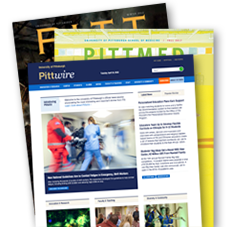University of Pittsburgh Trustees Approve 2011-12 Budget, Set Tuition Rates
PITTSBURGH—The University of Pittsburgh’s Board of Trustees, acting through its Executive Committee, today approved a $1.94 billion operating budget for the fiscal year that formally began on July 1. The budget was proposed by the University’s senior management team and was reviewed and recommended by the Board’s Budget Committee. Action by the Board was deferred at its June 24 annual meeting, pending final enactment of the Commonwealth’s budget, which occurred on June 30.
While expressing gratitude to members of the legislature who had worked to reduce the even steeper budget cuts that originally had been proposed, Pitt Chancellor Mark A. Nordenberg stated, “The deep and disproportionate reductions in state support built into the Commonwealth’s budget made it very difficult to craft this year’s operating budget. Pitt’s existing appropriation was cut by more than $40 million, a reduction of 22 percent. This compares to an overall reduction in state spending of about 4 percent.”
Nearly $32 million of Pitt’s total cut in state support came from a 19 percent reduction to the University’s education and general appropriation. An additional $8.5 million came from a 50 percent cut to four academic medical center lines that support important programs in the School of Medicine, Western Psychiatric Institute and Clinic, the School of Dental Medicine, and the Graduate School of Public Health.
In comparative terms, Pitt’s Commonwealth appropriation fell from $184.9 million in FY 2011 to $144.5 million in FY 2012. This takes the University back to its lowest level of state support since FY 1995. To place that reduction in context, the Consumer Price Index has risen by 52.7 percent since FY 1995, and the Higher Education Price Index, a more accurate measure of university operating costs, has risen by more than 72 percent over the same time period.
In addition to absorbing this deep reduction in state support, the University faces unavoidable expense increases in such areas as health insurance, facilities costs, technology improvements and licensing fees. It also is committed to making additional academic investments, some driven by growing enrollments and others tied to the levels of quality that must be maintained if Pitt is to remain competitive as a high-value provider of high-quality higher education. It is expected that these cost increases and essential investments will total about $30 million, creating a total budget gap in excess of $70 million.
Acting on its commitment not to place the entire burden of this year’s funding crisis on the shoulders of its students, the University expects to cover 60 percent of that gap through a combination of central and unit-level budget reductions and adjustments. The remaining 40 percent will be met by a general tuition increase of 8.5 percent for in-state students enrolled in the programs of the Pittsburgh campus, 4.0 percent for out-of-state students enrolled in the programs of the Pittsburgh campus, and 4.0 percent for both in-state and out-of-state students enrolled in the programs of the Bradford, Greensburg, Johnstown and Titusville campuses. Tuition in the School of Medicine, which suffered the highest percentage cuts to its state support, will be increased by 12 percent for in-state students and 6.0 percent for out-of-state students.
An additional $13 million in financial aid was included in the budget. This will bring Pitt’s total financial aid allocation for FY 2012 to a record level of more than $163 million. No increases to student fees were recommended or approved.
The budget also provides for a modest salary increase pool of 2 percent for members of the University’s faculty and staff. However, salary increases for employees with base earnings in excess of $40,000 will be deferred to Jan. 1, 2012.
In further commenting on the budget, Chancellor Nordenberg stated, “In constructing this budget, our most fundamental goals were to maintain high levels of access for accomplished students of modest means through tuition rates that are as competitive as circumstances permit and through further investments in financial aid; to provide support to high-performing members of our faculty and staff; and to continue investing in the programmatic excellence that has come to distinguish Pitt. Advancing those goals in the face of such deep Commonwealth cuts was not easy. However, under the circumstances, we believe that we have struck the balance that best positions Pitt to maintain its remarkable record of achievement and impact.”
###
7/8/11/amm/lks/jdh
Media Resources
Schools of the Health Sciences Media Relations
For more information about Pitt's schools of dental medicine, health and rehabilitation sciences, medicine, nursing, pharmacy, and public health, click here >
To locate stories from health science schools prior to 2013, visit the UPMC news archives »
Urgent Question?
University of Pittsburgh news reps are available to answer urgent media inquiries. Outside of regular business hours (Mon-Fri, 8:30 a.m.-5 p.m.), please email us at media@pitt.edu.
News reps for University of Pittsburgh Health Sciences schools can be reached outside of regular business hours through the paging operator at 1+412-647-2345.


